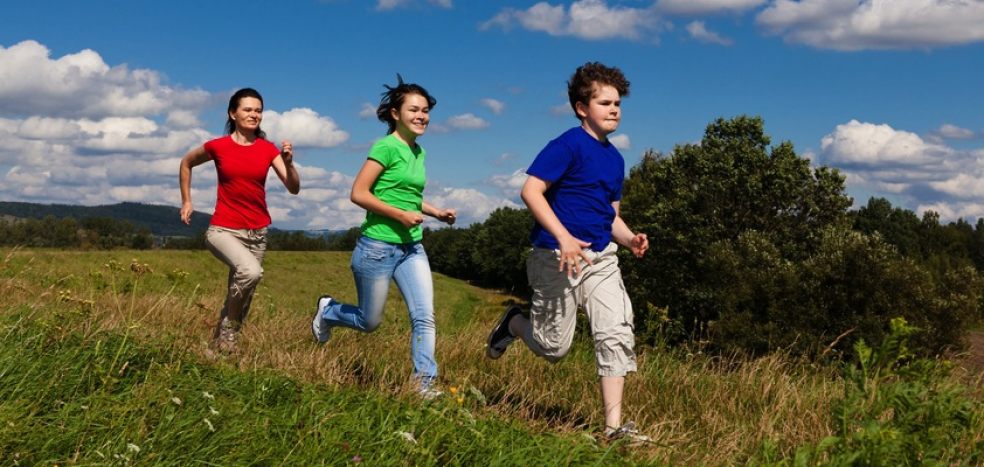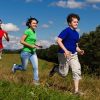
Teenagers urged to exercise to ward off bone disease
Playing football or running for at least three hours a week could help teenagers counteract the potential damage to their bone health caused by prolonged spells of sitting.
An international team, including an expert from the University of Exeter, has found evidence that adolescents who spend long periods engaged in certain sedentary activities are more likely to have low bone mineral content in parts of the body where it can be an indicator of the risk of developing osteoporosis.
In the research, which has just been published by BMC Public Health, the team found that studying put girls at particular risk, while for boys leisure internet use posed the greatest threat. Scientists found that participating in at least three hours of certain sports could significantly reduce the threat in girls. The study found evidence of the benefits of high-intensity sports where the participant is on their feet, such as football, basketball, netball or running.
Scientists have previously studied the impact of an inactive lifestyle on problems such as obesity or heart defects, but this is one of the first studies analysing the effects of different sedentary behaviours on bone health in the critical development period of adolescence.
Dr Luis Gracia Marco of the University of Exeter, who led the research, said: “Clearly we are not telling girls not to study. It is a fact of modern life that teenagers spend more time engaged in deskbound or sitting activities, but our research is one of the first to identify a connection between this behaviour in adolescents and low levels of bone mass in key regions of the body. It is already well-known that an inactive lifestyle has implications for young people, such as obesity and heart diseases. Combined with that, our findings emphasise the need for exercise, and we hope it will give some focus for young people and their parents to ward off any health problems later in life.”
The research was carried out in collaboration with scientists from the University of Zaragoza, the University of Granada, the Spanish National Research Council (CSIC), and the University of São Paulo, Brazil. It was supported by the European community Sixth RTD Framework Program, as well as with a grant from Fundación Cuenca Villoro.
The research assessed the lifestyles of 359 Spanish adolescents participating in the Healthy Lifestyle in Europe by Nutrition in Adolescence Study. It examined bone mineral content in the femoral neck region of the hip, which is a critical area for diagnosing osteoporosis.
The research team looked at the impact of different types of sitting activity, including watching television and playing computer games. The strongest connection between deskbound behaviour and low bone mineral content was found in girls’ hips, which is where most fractures occur. It was linked to study time, but regardless of how much time they spent studying, the risk was significantly reduced if they spent at least three hours each week participating in high-intensity upright sport.
Internet leisure use was found to negatively affect whole body bone mineral content in boys.
Dr Gracia Marco said: “More research is needed to establish exactly why there are differences between the two genders, and why these types of activity are particularly damaging to teenage boys and girls, but we can speculate that it is linked to how long they remain in the same position. Our findings indicate that activities such as studying, where you spend a long time sitting down without getting to your feet, could be detrimental to bone health. Although development of osteoporosis is particularly linked to adolescence, this may also have implications for other groups of people, such as office workers.”













